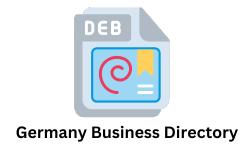If you get the intended conversation partner on the line, tell them who you are and why you are calling. Name a ‘pain’ or an issue that your conversation partner will most likely recognize. Make sure that you ‘get into the listening’ of your listener. Always end the opening pitch with an open question and wait for a silence. This must be filled in by the person who was called and not by the caller. This answer shows how the conversation can be continued and whether you have ‘got into the listening’ of the listener. Only when someone really listens to you can you have a good sales conversation.
Be surprising
If you call someone without an appointment, you are actually intruding on their time. Most people are not immediately happy when they find themselves with a salesperson on the line. So make sure you are different from others and actually bring something.
Take control of the sales conversation
Dare to use the informal form of address and say the first name of your conversation partner if you have one, so that you are on the same level. This way you take the what is the pix limit? schedule, fees and more lead in the conversation. Your pitch, the questions you ask and the words you use can also ensure that you are in the lead.
If you choose the right words that address what is going on with your conversation partner, you are using framing . With framing, you consciously or unconsciously set a certain frame at the beginning of a conversation to direct and control the conversation.
Listen, listen, listen, but dare to ask a good pitch
Listen more than you talk. That’s the only way to qatar phone number library find out what’s really going on with your prospect. The recipient is central. How can you help him or her further? If you don’t quite understand what the prospect/customer is talking about, because they use a lot of technical terms, just say so. That way you come across as interested and you can ultimately ask better (qualifying) questions.
An effective way to ask questions is the SPIN method . SPIN stands for:
S ituation questions
P roblem questions
I mplication questions
N eed/necessity questions
This way, the prospect is more open to what you have to offer.
Always be closing for commitment a good pitch
A call can end in three ways:
- You have an appointment or a deal (or a commitment)
- There is no match, so the paths diverge
- There will be a follow-up moment. This belgium numbers is how most appointments and calls end, but in practice it appears that this opportunity is not always sufficiently utilized.
‘Always be closing’ is a well-known sales saying. However, the focus here is on the deal and not on the customer. That’s why we prefer to call it ‘always be closing for commitment’. As a Salesperson, you follow the pace of your lead or prospect much more, but at the same time you create commitment. This is how you ultimately reach your final goal, namely closing the deal. A few simple examples:
- If you agree to email information, also agree on when you will contact them again about this.
- Calling someone at an inconvenient time? Don’t just ask on which day you can call back, but also at what time. Better yet, send an Outlook invitation for this time immediately so that your conversation partner actually reserves the time for you.
So the sales conversation does not end in a deal, but is it a serious lead? Always make sure that you ‘close’ a concrete follow-up moment.
